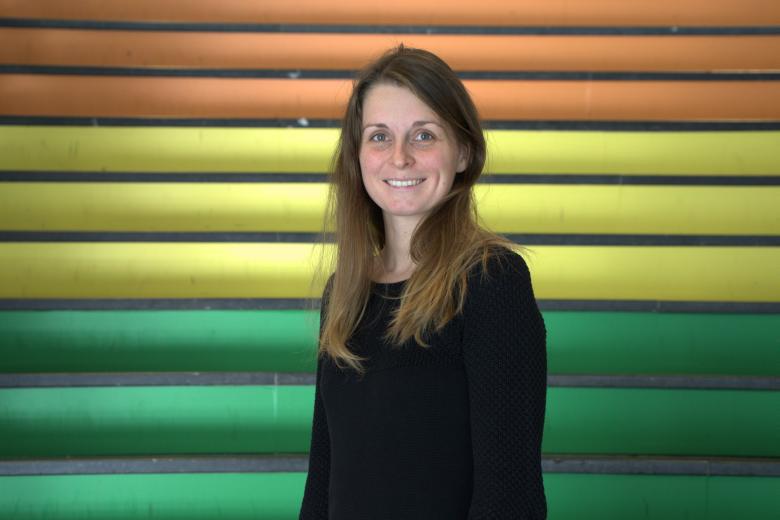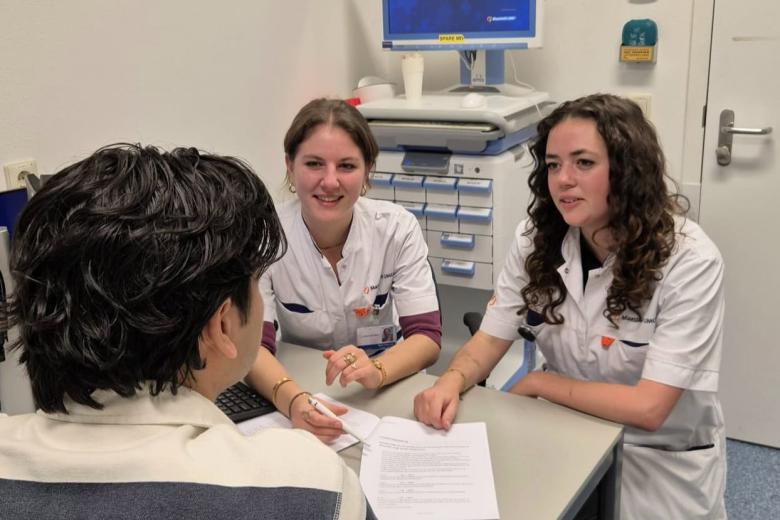Nationwide project for animal-free biomedical research on osteoarthritis launched
Maastricht University is a co-founder of Ombion Centre for Animal-free Biomedical Translation, which was officially launched on July 7. Ombion consists of over sixty partners and is supported by the Dutch National Growth Fund. Over the next ten years, the centre will focus on advancing animal-free biomedical research. One of the four transition projects within Ombion is ‘Osteoarthritis and Rheumatoid Arthritis’, led by Tim Welting (CAPHRI). Together with his team, he will develop models based on human cells to accelerate the development of osteoarthritis medication. Tim: “A huge motivator for me is the chance to make a real difference for osteoarthritis patients and to move towards more animal-free research.”
Tim Welting is chair of the department in orthopaedics and Professor of molecular cartilage biology. His research aims to improve care for patients with osteoarthritis. “Half a billion people worldwide are currently living with osteoarthritis,” Tim says. “In the Netherlands, we have around 1.5 million patients, and over the next 25 years that number is expected to rise to 3 million. There is no medication that slows down or stops osteoarthritis. We can only manage the disease, by using for example physiotherapy, lifestyle interventions, pain medication, or by ultimately replacing the patient’s affected joint.”
Human-based models
There are several reasons why there is no medication for osteoarthritis. “Many people describe osteoarthritis as a wear-and-tear disease,” Tim explains. “With that mindset, the focus shifts more towards replacing joints than on halting or preventing the disease. That reduces motivation to develop drugs. In addition, there are many differences between patients, for example in terms of age or stage of the disease. Another reason for the lack of medication is that many drugs pass early animal testing stages but often fail in human clinical trials. Animal models are often poor predictors of how a treatment will work in people, because a rat or mouse simply is not a human. That is why we need new models, developed using cells from our target group: humans.”
Replicating the joint
The aim of the Ombion project is to realise such models based on human cells. “The models should be representative of a number of aspects that are important in a joint,’ Tim explains. "Pain is one such aspect, as it is often the primary concern of patients. We also look at cartilage, the joint membrane and the lymphatic system. By combining models, we can mimic disease processes in a joint on a laboratory scale. We do this partly in the lab at UM, partly at UMC Utrecht and partly at Utrecht University. We also have support from ReumaNederland, a co-financing partner in this project. The best models will eventually be implemented in physical Ombion labs, which will serve as a centre of expertise where academics and industry partners can access these models.”
We hope to be able to accelerate the development of osteoarthritis medication by building models that are better at predicting than those based on animal testing.
Reducing animal testing
The project will span ten years in total. “We hope during this time to be able to accelerate the development of osteoarthritis medication by building models that are better at predicting than those based on animal testing,” Tim says. “That would not only make the results more applicable to humans, but also reduce the need for laboratory animals. The ultimate goal is to make and validate the models in a way that regulatory agencies start accepting such data as preclinical evidence before going to a clinical trial. This spring, the Food and Drug Administration (FDA) in the United States announced its intention to phase out animal experiments for drug development by reducing, refining or replacing them with non-animal methods in their regulations. So the timing of this project is actually quite nice."
Linking research, education and care
Tim is excited that the project has officially begun. “A huge motivator for me is the chance to make a real difference for osteoarthritis patients and to move towards more animal-free research,” he says. “I also find it incredibly motivating to be able to work with so many amazing people in our beautiful consortium with our industry partners, academics and ReumaNederland. Within the UM, we are part of CAPHRI and within Maastricht UMC+ we are part of the Centre for Movement, where osteoarthritis is our key focus. With its focus on prevention, this Ombion project fits incredibly well with CAPHRI and the Centre of Movement. To raise awareness and train the new generation of scientists in the new models being developed, educational activities with global reach are linked to the project activities through Ombion. In this way, we ensure that we link research, education and care."
Text: Joëlle van Wissen
Photo: Thijs Rooimans
Also read
-
Macrophages as key to treating liver fibrosis
Sabine Daemen is researching how certain macrophages can slow down fatty liver disease and fibrosis in order to develop new therapies.

-
Teacher Information Points at UM
UM faculties now host Teacher Information Points (TIPs) that offer local, “just-in-time” and on-demand support for teaching staff. The aim is simple: to provide help that is closely connected to day-to-day teaching practice.

-
More than a student job: five alumni about their unique role in groundbreaking vascular research
What is it like to take part in cutting-edge vascular research as a student, standing in the operating room, directly responsible for handling patient material? Five alumni of the Maastricht MAPEX student team share what they learned, the challenges they faced, and how this experience shaped their...
